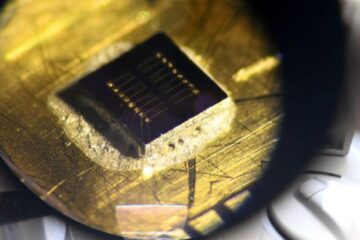Siemens' thermal drying system to help reduce Italian plant's sludge production by approximately 75 percent

Multiservizi, a publicly owned Italian company, operates water and wastewater treatment plants for 45 communities in Italy. The plant in Jesi serves 60,000 residents. Its new SBD from Siemens will reduce sludge production from 16,500 to 4,125 tons per year. The plant, which also has a natural gas boiler, is designed to recover thermal energy from the cogeneration plant, thus reducing CO2 emissions.
With the SBD, evaporation takes place when biosolids come in contact with the heated air. Biosolids are uniformly distributed on the entire belt width to cause uniform evaporation. The dryer is supplied in a two-belt system configuration. The belt speed and the temperature of the process air can be adjusted for different residence times. Varying residence time in the drying zone provides the means to adjust the product moisture to meet final use or disposal requirements.
The Siemens' thermal drying system was selected because of the technology's high reliability and safety, low maintenance, and high automation level. Other advantages include high energy efficiency, minimal environmental impact, and agriculture-grade pathogen reduction.
Italy produces approximately 4 million tons of biosolids annually – almost half of which is currently sent to landfill and another quarter, used for agricultural purposes. Limited landfill space and rising transportation costs are heightening the need to use technologies that reduce sludge volume.
The Siemens Industry Sector (Erlangen, Germany) is the world's leading supplier of innovative and environmentally friendly products and solutions for industrial customers. With end-to-end automation technology and industrial software, solid vertical-market expertise, and technology-based services, the Sector enhances its customers' productivity, efficiency, and flexibility. With a global workforce of more than 100,000 employees, the Industry Sector comprises the Divisions Industry Automation, Drive Technologies and Customer Services as well as the Business Unit Metals Technologies. For more information, visit http://www.siemens.com/industry
The Siemens Industry Automation Division (Nuremberg, Germany) supports the entire value chain of its industrial customers – from product design to production and services – with an unmatched combination of automation technology, industrial control technology, and industrial software. With its software solutions, the Division can shorten the time-to-market of new products by up to 50 percent. Industry Automation comprises five Business Units: Industrial Automation Systems, Control Components and Systems Engineering, Sensors and Communications, Siemens PLM Software, and Water Technologies. For more information, visit http://www.siemens.com/industryautomation
Reference Number: IIA2012042823e
Contact
Mr. Peter Jefimiec
Industry Automation Division
Siemens AG
Gleiwitzerstr. 555
90475 Nuremberg
Germany
Tel: +49 (911) 895-7975
peter.jefimiec@siemens.com
Contact USA
Ms. Allison Britt
Water Technologies Business Unit
Siemens Industry, Inc.
2501 N. Barrington Rd.
Hoffman Estates
IL 60192
USA
Tel: +1 (847) 713-8477
allison.britt@siemens.com
Media Contact
More Information:
http://www.siemens.com/waterAll latest news from the category: Machine Engineering
Machine engineering is one of Germany’s key industries. The importance of this segment has led to the creation of new university degree programs in fields such as production and logistics, process engineering, vehicle/automotive engineering, production engineering and aerospace engineering among others.
innovations-report offers informative reports and articles covering technologies such as automation, motion, power train, energy, conveyor, plastics, lightweight construction, logistics/warehousing, measurement systems, machine tools and control engineering.
Newest articles

Sea slugs inspire highly stretchable biomedical sensor
USC Viterbi School of Engineering researcher Hangbo Zhao presents findings on highly stretchable and customizable microneedles for application in fields including neuroscience, tissue engineering, and wearable bioelectronics. The revolution in…

Twisting and binding matter waves with photons in a cavity
Precisely measuring the energy states of individual atoms has been a historical challenge for physicists due to atomic recoil. When an atom interacts with a photon, the atom “recoils” in…

Nanotubes, nanoparticles, and antibodies detect tiny amounts of fentanyl
New sensor is six orders of magnitude more sensitive than the next best thing. A research team at Pitt led by Alexander Star, a chemistry professor in the Kenneth P. Dietrich…





















